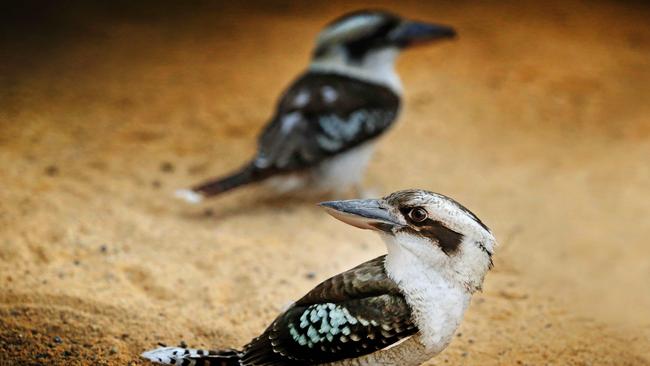Australia’s most iconic bird, the kookaburra, in strife in some areas
FIRST it was koalas, now another Aussie favourite looks like disappearing from Australian gardens and bushland.

News
Don't miss out on the headlines from News. Followed categories will be added to My News.
AUSTRALIA’S most iconic bird, the kookaburra, is in strife in some areas as are willy wagtails and peewees.
Brisbane and the southeast is suffering from a loss of previously common species, especially insectivorous birds like swallows and swifts.
Another in trouble is the beautiful rainbow bee eater and even some magpie populations are not doing well.
Raptors like falcons, owls and eagles in the dry interior which help regulate rat, mice and snake plagues also are decreasing in Queensland, the NT, WA and SA, says a BirdLife Australia State of Australia’s Birds report.
BirdLife chief executive Paul Sullivan said it was a surprise that such common birds were disappearing.
“These are birds that many Australians interact with daily,’’ he said.
“We’ve known for some time that many rare bird populations are declining but we were not aware of the decline of these very common and iconic birds.’’
It comes as a BirdLife, Australian Conservation Foundation and Environmental Justice Australia report finds that recovery plans for endangered species are failing.
ACF spokesman James Trezise said recovery plans mostly did not protect habitat yet this was the key to combating extinctions.
Launching the BirdLife report, Environment Minister Greg Hunt said the Government had identified 20 bird species that it would aim to save over the next five years but said that governments had to work smarter and harder on wildlife.
“I want to bring these birds back far enough from the brink to survive,’’ he said.
“I want future generations to enjoy the colour, movement and song they bring to our lives.’’
The first 10 for priority action are the helmeted honeyeater, hooded plover, eastern bristlebird, regent honeyeater, mallee emu-wren, plains-wanderer, night parrot, Alligator Rivers yellow chat, Norfolk Island’s green parrot and boobook owl.
Hollow-nesting birds like kookaburras are down in a coastal strip from southeast Queensland to Victoria while rainforest species like paradise riflebirds appear to be increasing.
Others in trouble are the double-barred finch, peaceful dove, black-faced cuckoo-shrike, brown honeyeater and spangled drongo.
Birdlife scientist James O’Connor said it was thought vegetation clearing and the isolation of bushland patches were behind losses.
“If you take away their homes and food sources, you don’t have birds,’’ he said.
Mr O’Connor said people thought that birds would fly, elsewhere when vegetation was cleared. In fact, many were sedentary with specialised feeding and breeding requirements.


